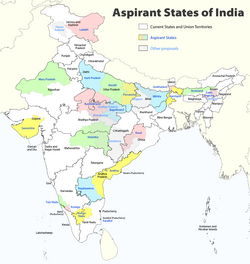Lai Autonomous District Council | |
|---|---|
 | |
| Type | |
| Type | |
| Leadership | |
Chief Executive Member | TBA |
| Structure | |
| Seats | 29 Councillors (25 Elected + 4 Nominated) |
 | |
Political groups | Parties (25) Nominated (4)
|
| Elections | |
| 25 plurality voting | |
| 4 nominated | |
Last election | 3 December 2025 |
Next election | 2030 |
| Meeting place | |
| Lawngtlai, Mizoram | |
| Website | |
| ladc | |
The Lai Autonomous District Council (LADC) is one of the three Autonomous District Councils in Mizoram state in north-east India. It covers the Lawngtlai and Sangau subdivisions of the Lawngtlai district. It is an autonomous district council for the Lai people living in south-eastern Mizoram.
Contents

The LADC's headquarters are in Lawngtlai town, which is the district capital of the Lawngtlai district.



